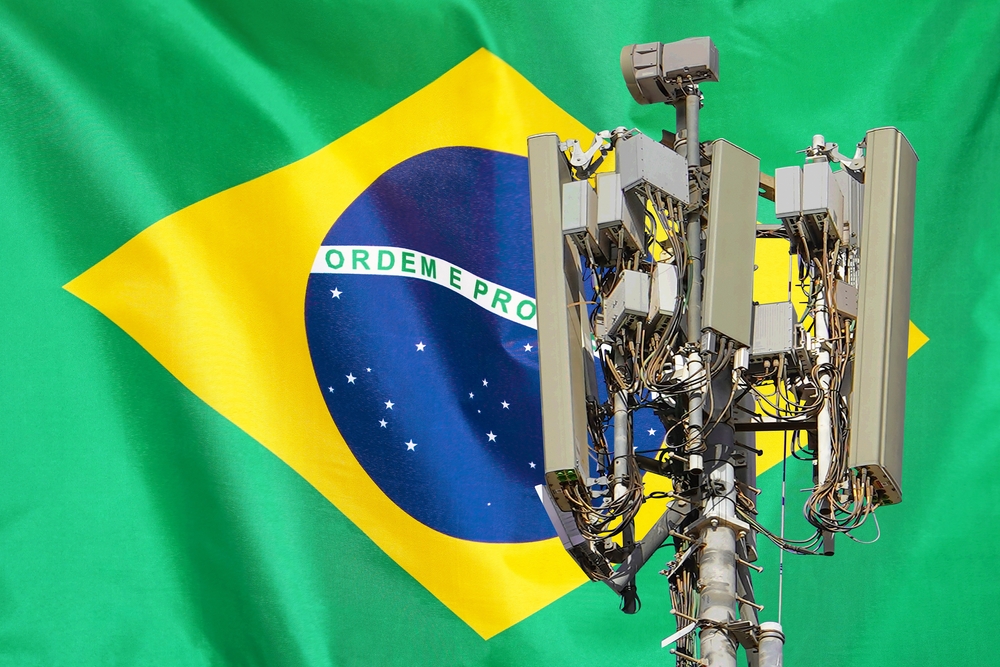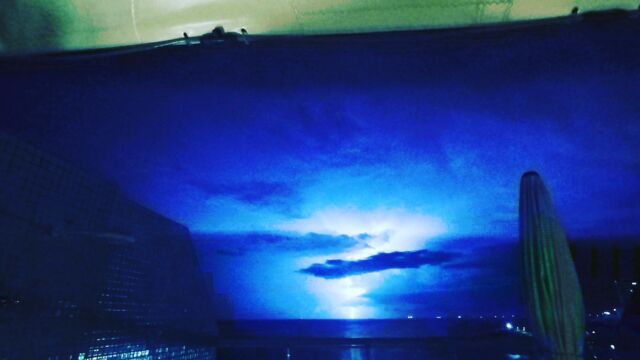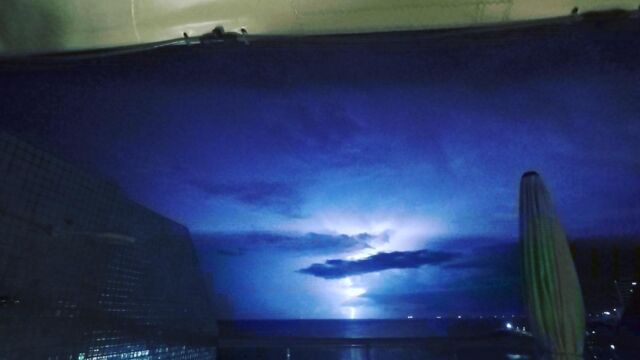Table of Content
ToggleIntroduction
Embraer stands as one of the world’s leading aerospace companies, creating innovative aircraft for commercial, executive, defense, and agricultural sectors. Founded in Brazil in 1969, this multinational corporation has grown to become a global powerhouse in aviation manufacturing, particularly excelling in regional jets that seat between 70 and 150 passengers. With over 80 airlines flying their E-Jets and an impressive 99.9% mission completion rate, Embraer has established itself as a reliable and trusted name in the aerospace industry.
The company maintains a direct and transparent relationship with stockholders while continuously developing cutting-edge aviation systems. As Brazil’s main exporter of high-value-added goods, Embraer contributes significantly to the country’s economy while expanding its international presence. Recent strategic partnerships, including one with Microsoft Flight Simulator, demonstrate the company’s commitment to innovation and growth in the digital age.
Key Takeaways
- Embraer is a Brazilian multinational aerospace corporation that produces aircraft for commercial, executive, defense, and agricultural markets with exceptional reliability.
- The company’s E-Jets serve over 80 airlines worldwide with a 99.9% mission completion rate, establishing Embraer as a leader in the 70-150 seat passenger jet segment.
- As Brazil’s primary high-value exporter, Embraer continues to expand globally through strategic partnerships and ongoing technological innovation.
History of Embraer
Embraer’s journey from a government initiative to a global aerospace leader spans over five decades. The company’s evolution reflects Brazil’s ambition to develop domestic aerospace capabilities while adapting to changing global markets.
Foundation and Early Years
Embraer was founded on August 19, 1969 by the Brazilian government as a state-owned company. The name “Embraer” stands for “Empresa Brasileira de Aeronáutica” (Brazilian Aeronautics Company).
Brazil had already shown interest in aviation long before Embraer’s creation. In fact, Brazilian contributions to aeronautics date back to 1709 when Bartolomeu de Gusmão created the hot air balloon.
The government established Embraer as a national champion for domestic aerospace technology. Its initial focus was on military aircraft production to meet the Brazilian Air Force’s needs.
Embraer’s first production aircraft emerged on October 19, 1969. Early models included the EMB-110 Bandeirante, a twin-turboprop aircraft that helped establish the company’s reputation for practical and efficient designs.
Expansion and Privatization
During the 1970s and 1980s, Embraer expanded its product line beyond military aircraft to include regional commercial planes. This diversification helped the company grow despite economic challenges.
The EMB-120 Brasilia, introduced in the 1980s, became a successful commuter aircraft used by airlines around the world. This success demonstrated Embraer’s ability to compete in international markets.
A significant turning point came in 1994 when Embraer was privatized. This transformation freed the company from government control and allowed it to operate with greater commercial flexibility.
The ERJ-145 regional jet took its first flight on August 11, 1995, marking Embraer’s successful entry into the jet aircraft market. This aircraft family became extremely popular with regional airlines globally.
Modern Era Developments
In the 2000s, Embraer launched the E-Jet family, which further established the company as a major player in the commercial aviation sector. These aircraft serve the 70-130 seat market segment.
The company continued to diversify by entering the business jet market with the Legacy series, followed by the Phenom, Lineage, and Praetor models. This move helped balance commercial aviation market fluctuations.
In 2018, Boeing and Embraer announced plans for a strategic partnership, though this deal ultimately fell through in 2020 during the COVID-19 pandemic.
June 17, 2013 marked another milestone with the launch of the E-Jets E2 program, featuring more fuel-efficient engines and improved aerodynamics.
Today, Embraer stands as Brazil’s largest exporter of high-value goods and employs thousands of people worldwide. The company continues to innovate in commercial, executive, defense, and agricultural aviation sectors.
Embraer’s Product Lineup
Embraer offers a diverse range of aircraft serving commercial airlines, private executives, and defense organizations worldwide. The Brazilian manufacturer has established itself as a leader in regional aviation while expanding into multiple aviation segments.
Commercial Jets
Embraer’s commercial aviation division focuses primarily on regional jets with the E-Jet family as its flagship product line. The original E-Jets include the E170, E175, E190, and E195 models that serve the 70-120 seat market segment.
The company has evolved this line with the next-generation E-Jets E2 family, comprising the E175-E2, E190-E2, and E195-E2. These aircraft feature improved aerodynamics, new wings, and more efficient engines.
The E190-E2 offers airlines flexibility to explore new markets and increase frequency on existing routes. With improved fuel efficiency and reduced maintenance costs, these aircraft provide an economical solution for regional air travel.
Embraer commercial jets are operated by major airlines and regional carriers across the globe, establishing the company as a key player in the commercial aviation market.
Executive Jets
In the business aviation sector, Embraer offers an industry-leading portfolio of executive jets spanning multiple categories. The lineup includes the entry-level Phenom 100EV, the light jet Phenom 300E, the midsize Praetor 500, and the super-midsize Praetor 600.
The Phenom 300E has been particularly successful, earning recognition as the world’s best-selling light jet for 13 consecutive years. Known for its speed, attractive design, and flight characteristics, it continues to evolve with enhanced features.
For those requiring more range and cabin space, the Praetor series offers intercontinental capabilities with advanced avionics and premium comfort features. These aircraft combine performance with luxury, featuring spacious cabins and state-of-the-art technology.
Embraer’s executive jets emphasize comfort, performance, and value, making them popular choices among private owners, charter companies, and corporate flight departments worldwide.
Defense and Security Aircraft
Embraer’s defense division produces specialized aircraft for military and government applications. The portfolio includes the A-29 Super Tucano, a light attack and advanced training aircraft used by over 15 air forces globally.
The multi-mission C-390 Millennium represents Embraer’s largest military transport aircraft. This tactical transport can perform various missions including cargo and troop transport, aerial refueling, search and rescue, and humanitarian operations.
Embraer also offers special mission aircraft based on commercial platforms, such as the EMB 145 AEW&C (Airborne Early Warning and Control) and the P-99 maritime patrol aircraft. These aircraft provide surveillance and intelligence capabilities to military customers.
The company’s defense products emphasize versatility, reliability, and cost-effectiveness. They’re designed to operate efficiently in diverse environments, from remote airstrips to sophisticated military operations, cementing Embraer’s position in the global defense industry.
Technological Advancements
Embraer has positioned itself as a leader in aerospace innovation through significant investments and forward-thinking projects. The company allocates nearly 10% of its revenue to research and development initiatives while pursuing partnerships that drive technological progress.
Innovations in Aerospace
Embraer has made remarkable strides in autonomous flight technology through strategic partnerships with global tech companies. These collaborations focus on developing breakthrough autonomous systems that will reshape future aircraft operations and capabilities.
The company recently unveiled images of a demonstrator aircraft with 100% electric propulsion technology on the eve of its 50th anniversary. This milestone represents a significant advancement in Embraer’s pursuit of alternative propulsion systems.
Their Energia concept aircraft showcases cutting-edge developments including:
- Advanced airframe design with clean wing configuration
- Improved aerodynamics
- Innovative propulsion systems
Embraer has also expanded its fly-by-wire flight control technology, enhancing aircraft performance and safety through computerized systems that replace conventional mechanical controls.
Sustainability Efforts
Embraer has demonstrated a strong commitment to environmental responsibility through its technological developments. The company is actively pursuing sustainability initiatives that aim to reduce the aviation industry’s carbon footprint.
The Energia family of concept aircraft represents Embraer’s vision for more sustainable aviation. These designs explore various eco-friendly propulsion technologies including hybrid-electric, fully electric, and hydrogen fuel cell systems.
Embraer has established specific environmental goals and timelines for implementing these greener technologies in their aircraft. Their research prioritizes reducing emissions while maintaining performance standards that customers expect.
The company collaborates with environmental organizations and industry partners to accelerate the development and adoption of sustainable aviation technologies. These efforts align with global initiatives to combat climate change within the aerospace sector.
Global Presence and Market Reach
Embraer has established itself as a major player in the global aerospace industry with operations spanning multiple continents and strategic alliances that strengthen its position in international markets.
Strategic Partnerships
Embraer actively develops partnerships to expand its global footprint and enhance market penetration. The company has formed significant alliances within the BRICS alliance, which has substantially contributed to its global reach and market share growth.
These collaborations enable Embraer to access new markets while sharing technological expertise and manufacturing capabilities. The partnerships also help the company navigate complex regulatory environments across different regions.
In late 2021, Embraer published its 20-year Market Outlook, demonstrating its long-term strategic planning and understanding of global aviation trends.
International Operations
Embraer maintains a strong international presence with manufacturing facilities and service centers strategically positioned around the world. The company recently secured a significant order from Japan’s ANA Holdings for 20 E190-E2 jets, worth approximately $1.5 billion.
This deal highlights Embraer’s growing influence in the Asian market, complementing its established positions in North America, Europe, and Latin America. The company’s 2024 Market Outlook projects 10,500 orders for new jets and turboprops through 2043, indicating strong future growth.
Embraer’s commercial aviation division regularly analyzes global market trends to position its products effectively in diverse regional markets.
Corporate Structure
Embraer maintains a robust corporate structure that helps this Brazilian aerospace conglomerate operate efficiently across global markets. The company follows strict governance standards while organizing its operations into specialized divisions.
Governance and Leadership
Embraer’s governance structure consists of a Board of Directors with three advisory committees: the Strategy and Innovation Committee, Audit, Risk and Ethics Committee, and the third committee focused on personnel matters. This leadership framework ensures proper oversight and strategic direction.
The company has adopted strict corporate governance standards and maintains association with the Brazilian Institute of Corporate Governance (IBGC). This commitment to good governance practices helps Embraer maintain transparency and accountability.
Beyond the Board, the governance framework includes a Fiscal Council, Executive Officers, and Internal Audit functions. These components work together to ensure proper financial controls and operational integrity throughout the organization.
Divisions and Subsidiaries
Embraer is organized into four primary segments: Commercial Aviation, Executive Aviation, Defense & Security, and Services & Support. The Commercial Aviation division manages development, production, sales, and leasing of commercial jets to airlines worldwide.
The Executive Aviation segment focuses on business jets, while Defense & Security handles military aircraft and security solutions. The Services & Support division provides maintenance and other aftermarket services for Embraer’s global fleet.
In 2020, Embraer underwent a structural adjustment following both COVID-19 impacts and the canceled Boeing partnership. This restructuring reduced the global workforce by approximately 4.5% (about 900 employees).
Each division operates semi-independently but coordinates under the central corporate leadership. This structure allows specialized focus while maintaining unified strategic direction across all business areas.
Research and Development
Embraer has built a strong reputation for innovation in the aerospace industry. The Brazilian aircraft manufacturer commits substantial resources to advance technology and develop new aircraft models.
R&D Investments
Embraer demonstrates significant commitment to innovation by investing almost 10% of its revenue in research, development, and facility improvements. This substantial allocation helps the company stay competitive in the global aerospace market.
For 2021, Embraer’s R&D expenses reached $0.043 billion, increasing 44.3% from 2020. This growth reflects the company’s dedication to advancing its technological capabilities despite industry challenges.
Recent investments have expanded beyond traditional aircraft development. Embraer is now stepping up research activities for electric aircraft, particularly in the emerging eVTOL (electric vertical takeoff and landing) sector.
Collaborative Projects
Embraer regularly partners with research institutions to enhance its innovation capabilities. A notable example is its extended cooperation with DLR (German Aerospace Center), where they jointly address issues in aerodynamics and flight physics and conduct wind tunnel studies.
The company’s Energia project highlights its collaborative approach to sustainable aviation. Initially focusing on 30-seat aircraft designs, Embraer has expanded this research to include 50-seater aircraft, as announced at the Farnborough Airshow.
These partnerships enable Embraer to leverage external expertise while maintaining its innovation focus. By combining internal R&D capabilities with collaborative research projects, the company continues to develop cutting-edge aerospace technologies.
Financial Performance
Embraer has shown remarkable financial resilience and growth in recent periods, with significant improvements in key metrics that highlight the company’s strategic success and market positioning.
Economic Impact
Embraer’s economic footprint has strengthened considerably in recent reporting periods. The company achieved a dramatic improvement in its debt position, ending 2024 with a 0.1x net debt-to-EBITDA ratio, down significantly from 1.4x in 2023. This substantial reduction demonstrates Embraer’s enhanced financial stability.
The improved financial standing has gained recognition from credit rating agencies. Moody’s upgraded Embraer’s credit rating from “Ba1” to “Baa3,” reflecting increased confidence in the company’s financial health and future prospects.
In the fourth quarter of 2023, Embraer posted strong operational results with adjusted EBIT reaching $181.7 million, demonstrating solid profitability and operational efficiency.
Revenue and Sales Analysis
Embraer achieved record revenue of $6.4 billion for 2024, representing an impressive 21% increase year over year. This performance pushed the company to the high end of its financial guidance, showcasing strong sales execution across its divisions.
The fourth quarter of 2023 showed robust profitability metrics with adjusted EBIT and EBITDA margins of 9.2% and 12.8% respectively. These margins indicate effective cost management and operational efficiency.
Looking forward, Embraer is positioning for continued growth in 2025 following its record-setting performance in 2024. The company’s diverse portfolio across commercial, executive, defense, and services segments provides multiple revenue streams and helps balance market fluctuations.
Embraer’s Competitive Landscape
Embraer faces significant challenges in the global aerospace industry while maintaining specific market strengths against larger competitors. The Brazilian manufacturer leverages technological innovation and strategic partnerships to carve out its unique position in commercial aviation.
Market Position
Embraer has established itself as a leading manufacturer in the regional jet segment, particularly with aircraft seating 70-130 passengers. The company’s E-Jet family has helped solidify its reputation in this niche market. Following the COVID-19 pandemic, Embraer adapted to changing demand patterns and shifting customer mixes.
The manufacturer’s latest 20-year market outlook estimates 10,500 orders for new jets and turboprops through 2043. This forecast demonstrates confidence in their market segment despite global economic uncertainties.
To strengthen its position, Embraer has announced plans to invest $3.5 billion by 2030. This investment aims to enhance manufacturing capabilities and develop new aircraft models to meet evolving market demands.
Key Competitors
Embraer competes directly with several major aerospace manufacturers:
- Airbus: Primary competitor in the small commercial aircraft segment, especially after acquiring Bombardier’s C-Series (now A220)
- Boeing: Though focused on larger aircraft, competes in some overlapping markets
- ATR: Major competitor in the turboprop segment
- Mitsubishi: Developing regional jets that could challenge Embraer’s market share
Embraer differentiates itself through innovative technology and strategic partnerships. Their aircraft offer competitive fuel efficiency and operational costs, making them attractive to regional airlines and major carriers operating shorter routes.
The company’s diversification into executive aviation, defense, and agricultural aviation helps buffer against market fluctuations in any single segment. This strategy provides Embraer with stability when competing against larger, more specialized manufacturers.
Customer Base and Services
Embraer maintains strong relationships with diverse clients worldwide through comprehensive support systems and tailored services. The company’s customer-centric approach has built a substantial global presence with impressive retention rates across commercial, executive, and defense sectors.
After-Sales Support
Embraer Services & Support employs over 4,000 professionals globally to assist more than 2,000 customers in over 100 countries. This extensive network ensures clients receive prompt maintenance and technical assistance regardless of location.
The company has expanded its service center capacity in the United States, with dedicated facilities for executive jet customers in Mesa, AZ and Melbourne, FL. This strategic expansion demonstrates Embraer’s commitment to improving accessibility to maintenance services.
Their maintenance programs have achieved remarkable success, with a 90% customer retention rate and over 1.3 million flight hours logged by enrolled aircraft. These impressive metrics reflect the quality and reliability of Embraer’s after-sales support.
Clientele and Contracts
Embraer serves a diverse customer base that includes commercial airlines, corporate clients, and defense organizations. Each segment receives specialized attention according to their unique operational needs and requirements.
In 2017, Embraer created a dedicated business unit focused on customer support and services, emphasizing the company’s strategic priority on client relationships. This organizational structure allows for more targeted assistance tailored to specific market segments.
The company’s backlog reached $18.7 billion in 2023, representing a substantial $1.2 billion growth and reflecting strong client confidence in Embraer products. Deliveries also increased by 13% during this period, highlighting robust demand across market sectors.
Key clients include regional airlines, business executives, and government agencies spanning six continents, making Embraer a truly global aircraft manufacturer with broad market appeal.
Regulatory Compliance and Safety Standards
Embraer maintains strict adherence to international aviation regulations and implements comprehensive safety measures across all its aircraft models. The company’s commitment to compliance ensures its products meet stringent requirements in global markets.
Certification Processes
Embraer follows rigorous certification procedures to ensure its aircraft meet global airworthiness standards. The certification process involves extensive testing and documentation to comply with regulations from authorities like the FAA and EASA.
The company must demonstrate compliance with fuel-vent and other technical requirements for new aircraft models like the ERJ 190-300. This process includes system validation, structural testing, and flight testing under various conditions.
Special certification conditions are often applied to Embraer aircraft due to their advanced technologies and unique design features. These additional requirements ensure the aircraft maintain safety standards even with innovative systems.
Recertification is also required when modifications are made to existing models, ensuring continuous compliance throughout the aircraft’s lifecycle.
Safety Protocols
Embraer implements comprehensive safety protocols across all operations, from design and manufacturing to maintenance. The company’s safety system follows international standards for health, safety, planning, and verification with corrective action procedures when needed.
Regular safety audits and inspections help identify potential issues before they affect operations. The company actively monitors airworthiness directives, such as the recent proposed superseding directive for the ERJ 170 airplanes.
Embraer’s Ethics and Compliance program is supervised by the Board of Directors and its Audit, Risk & Ethics Committee, ensuring autonomy and integration of safety standards throughout the organization.
The company maintains a strong safety culture, providing regular training for employees on safety protocols and encouraging reporting of potential safety concerns without fear of reprisal.
Frequently Asked Questions
Embraer’s aircraft lineup, corporate structure, and technical specifications often generate inquiries from aviation enthusiasts and industry professionals. The Brazilian aerospace manufacturer has established a distinct position in the regional jet market.
What are the primary differences between Embraer and Bombardier aircraft?
Embraer aircraft typically feature wider cabins and larger overhead bins compared to equivalent Bombardier models. The E-Jets have a 2-2 seating configuration which eliminates the middle seat, creating a more comfortable passenger experience.
Bombardier’s CRJ series aircraft generally have smaller windows and less headroom than comparable Embraer models. However, Bombardier aircraft have historically offered slightly better fuel efficiency on certain routes.
Embraer’s newer E2 series competes directly with Bombardier’s A220 series (formerly C-Series, now owned by Airbus), with both focusing on next-generation efficiency improvements and reduced environmental impact.
How is Embraer pronounced and what does the name signify?
Embraer is pronounced “em-brah-AIR” with emphasis on the final syllable. The name is an abbreviation of “Empresa Brasileira de Aeronáutica,” which translates to “Brazilian Aeronautics Company” in English.
The company name reflects its Brazilian heritage and national origins as it was founded as a government-controlled corporation in 1969. The name has remained unchanged despite the company’s privatization in 1994.
Which airlines operate Embraer 190 and 175 models predominantly?
Republic Airways operates one of the largest fleets of Embraer 175 aircraft in North America, flying them for major carriers including American Eagle, Delta Connection, and United Express. JetBlue has maintained a significant fleet of Embraer 190 aircraft for their regional routes.
In Europe, KLM Cityhopper has integrated numerous E175 and E190 aircraft into their fleet. LOT Polish Airlines and Air France regional subsidiaries also operate substantial numbers of these models.
Brazilian airline Azul, which has strong connections to Embraer due to shared national heritage, operates one of the largest Embraer fleets globally, including both E175 and E190 models.
What are the distinguishing features of Embraer aircraft compared to other manufacturers?
Embraer aircraft feature distinctive pointy noses and T-tail configurations that make them easily identifiable on airport tarmacs. Their regional jets incorporate larger windows than competitors, providing more natural light in the cabin.
The manufacturer prioritizes passenger comfort with wider seats and aisles compared to other regional jets. Most Embraer commercial aircraft utilize a 2-2 seating configuration that eliminates the dreaded middle seat found on larger narrow-body aircraft.
Embraer’s fly-by-wire technology and advanced avionics create a consistent flight experience across their product line. This commonality allows pilots to transition between different Embraer models with minimal additional training.
Can you list the various models of aircraft offered by Embraer?
Embraer’s commercial lineup includes the E-Jet family (E170, E175, E190, and E195) and the newer E2 generation (E175-E2, E190-E2, and E195-E2). These aircraft typically seat between 70-146 passengers depending on configuration.
The executive aviation division produces the Phenom 100 and 300 light jets, the midsize Legacy 450 and 500 jets, and the large-cabin Praetor 500 and 600 models. The Lineage 1000E, based on the E190 platform, serves as their ultra-large executive jet offering.
Embraer’s defense portfolio includes the A-29 Super Tucano turboprop training and light attack aircraft, the KC-390 Millennium transport aircraft, and various specialized aircraft for intelligence, surveillance, and reconnaissance missions.
What is the corporate history and ownership structure of Embraer?
Embraer was founded as a state-owned company in 1969 under Brazil’s military government to develop the country’s aerospace industry. The company was privatized in 1994, transitioning to a publicly-traded corporation with shares listed on both Brazilian and New York stock exchanges.
In 2019, Embraer completed a significant transaction with Boeing to sell 80% of its commercial aircraft business, but the deal collapsed in April 2020 during the COVID-19 pandemic. This failed merger returned Embraer to its independent structure.
Today, Embraer operates as a public company with diverse institutional and individual shareholders. The Brazilian government retains a “golden share” that gives it veto power over certain strategic decisions including military applications and potential changes in controlling ownership.



















